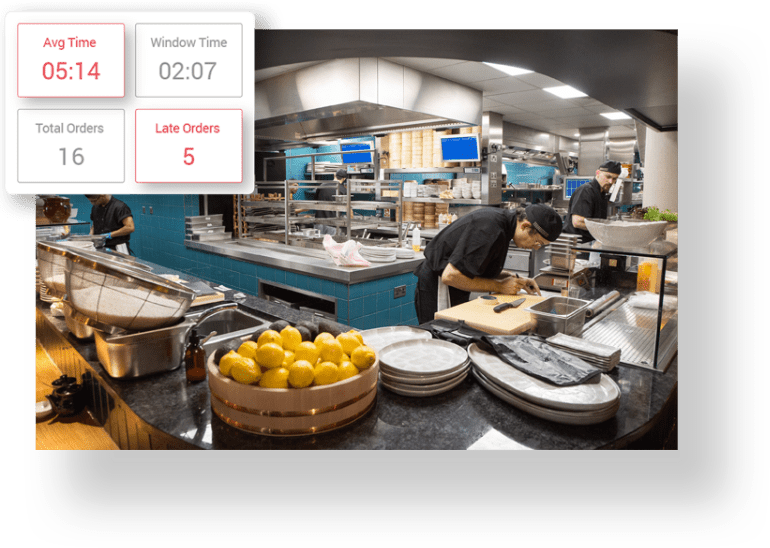
3.1.2022
Industry veterans may remember the days of speaking a food order into a microphone and hoping that the back of house staff heard it correctly, but these days it’s hard to imagine a restaurant of any size functioning efficiently without a kitchen automation system. We can thank QSR Automations for ideating this technology more than 25 years ago and continuing to perfect it ever since. Its ConnectSmart platform offers a connected suite of applications that allows customers to seamlessly integrate both front and back-of-house operations, even among multiple brands, leading to increased efficiency and a more positive guest experience.
Founded by CEO Angela Leet and her late husband Lee Leet, Louisville, Kentucky-based QSR Automations continues to up the ante on how to make restaurants of all stripes more efficient. In this interview, Angela shares her perspective on how technology is changing the way restaurants operate and what’s next for the industry as recovery continues.
QSR Automations has established itself as a leading provider of kitchen automation, reservation and table management, off-premise technology, and predictive analytics. There are a lot of other players in the restaurant technology space. What’s unique or special about your ConnectSmart platform capabilities?
With ConnectSmart, the possibilities to customize for your particular business are limitless. When Lee first developed ConnectSmart, kitchen display systems were designed to serve fast-food concepts, but it wasn’t too long before we realized that all types of restaurants can benefit from this type of technology. The key is it must integrate seamlessly with existing processes and technologies. So we created a system that can be layered into the existing tech stack of any given restaurant, without the operator needing to invest in new POS systems, for example.
wasn’t too long before we realized that all types of restaurants can benefit from this type of technology. The key is it must integrate seamlessly with existing processes and technologies. So we created a system that can be layered into the existing tech stack of any given restaurant, without the operator needing to invest in new POS systems, for example.
The platform is divided into two products: Kitchen for back-of-house features, and Host for front-of-house. We also created ConnectSmart Go, which assists with off-premise orders. These can be used together or independently for a truly customized approach to restaurants and businesses of any size. Today our products are found everywhere from single-unit fast food operations to global casual dining chains, theme parks, stadiums, hotels, airports, and even senior living facilities. If it has a kitchen, ConnectSmart can help it run better.

Can you provide some examples of how restaurants are utilizing ConnectSmart in ways that have enabled them to increase revenues and profitability?
The thing I’m most proud of about this technology is that it is a true problem-solver. No two restaurants run their kitchens exactly the same way, and the systems we create for customers are just as diverse. We pioneered features like delayed timing and individual item level displays, and fully integrated table management and reservation systems. We can layer in integrated recipe viewing and management for product consistency, packaging stations to ensure to-go orders are properly packed without wasting utensils or condiments, and so much more. Hosts and servers can see the status of each party’s food whether they are dining in or ordering off-premise without ever leaving the front desk. Staff in the kitchen can see how many guests are seated or waiting so they know when the next rush is going to hit and can plan for labor accordingly.
management and reservation systems. We can layer in integrated recipe viewing and management for product consistency, packaging stations to ensure to-go orders are properly packed without wasting utensils or condiments, and so much more. Hosts and servers can see the status of each party’s food whether they are dining in or ordering off-premise without ever leaving the front desk. Staff in the kitchen can see how many guests are seated or waiting so they know when the next rush is going to hit and can plan for labor accordingly.
These systems can all share data between the front and back of house operations, so kitchens remain calm and efficient, while hosts and servers curate a seamless experience for guests. On top of all of that we use APIs to get full access to all the critical operational data provided by the platform and allow the user to integrate their own- or third-party applications into our system. Having access to all this information really helps operators run a more efficient business.

How has ConnectSmart helped restaurants navigate the pandemic? Have any new features or functionalities been added to the platform as a result of the current market environment?
It goes without saying that the pandemic has dramatically changed consumers’ dining habits and having a solid kitchen automation system in place has definitely helped operators shift more seamlessly. Our ConnectSmart Go app, which allows operators to use SMS messaging to speed up curbside delivery, was already in the works in spring 2020, but we fast-tracked its development because there was such a clear need to so many of our customers. The app uses Customized Order Confirmation SMS messaging to ask guests for car make, model, color or the numbered parking space where they parked, which really speeds up the curbside delivery process.
We also saw many of our existing customers adding our host dashboard metrics feature in 2020, which lets front-of-house users check and calculate capacity restrictions based on local ordinances. There’s also another tool that tracks “web aheads” to avoid crowds in lobbies.
One of our most popular features is the Get in Line QR feature, which is free to all customers using ConnectSmart Host. Restaurants can print a giant QR Code and hang it on a window or sign so guests don’t even have to walk inside to add their names to the waitlist, which makes it easier for diners to remain socially distant. Restaurants can also use QR codes to link to their menu and use an API to process contactless payment.
One feature that’s given operators a lot of peace of mind is adding a logo to the order receipt. It sounds simple, but it provides a timestamp to an off-premise guest that shows when the food is ready versus when it is delivered. Hopefully the guest is happy with the timing, but if it took an hour for the food to reach them versus when the receipt said it was ready, the issue lies with the delivery provider, not the restaurant.
We’ve heard from many users that these features helped them pivot focus and stay afloat during some very trying times for our business.
Where should restaurants put their focus as they work toward creating and maintaining a thriving business model in the new reality of the pandemic?
We talk a lot about how technology can result in more efficient operations and happier employees, which are, of course, essential for a thriving business. But it’s important not to lose sight of the end goal, which is diners that keep coming back. This was true prior to March 2020 and will never change: You can be a fabulous restaurant on paper, but if the dining experience is subpar, you’re going to struggle. We see time and time again that customer complaints are usually the result of poor service and inconsistencies in dishes, not the quality of the food itself. So yes, have a great product, but invest in systems that ensure the guests feel good about their dining experience as well. For example, no one inside wants to see third-party delivery drivers leaving with food while they sit and wait for a table.
Going forward, I think that off-premise solutions are vital. Many diners are accustomed to being able to get their favorite restaurant meals delivered right to their door, and while some have been anxious to get back in a dining room and return to “normal”, many others are happy with this newfound flexibility and will continue to rely on it. So if your off-premise solutions were cobbled together in a panic, now is a great time to revisit those plans and develop a more robust strategy that include integrated kitchen automation and guest management solutions.
What, in your view, are the biggest obstacles restaurant operators are likely to face over the next few years as they look to rebuild their businesses? How can technology help address those challenges?
Staffing will continue to be an issue, and those who value their staff and provide them the support they need to do their jobs well will come out on top. Front-of-house workers especially face so much pressure from the public. Technology helps by providing the tools to ensure their success. For example, a front-of-house system can provide accurate quote times for a waitlist or suggest proper server rotations to make inexperienced staff better at their jobs, all ways to make service easier for everyone. Access to recipes and coordination of food flow through with a kitchen automation system, helps to alleviate the stress of a busy kitchen with new cooks on the line.
front-of-house system can provide accurate quote times for a waitlist or suggest proper server rotations to make inexperienced staff better at their jobs, all ways to make service easier for everyone. Access to recipes and coordination of food flow through with a kitchen automation system, helps to alleviate the stress of a busy kitchen with new cooks on the line.
What’s next for QSR Automations?
We operate under the core belief that eating great food brings people a unique sense of joy and preparing and serving it should as well. That’s what brings us all at QSR Automations to work every day. The restaurant industry has changed drastically in the last two years, and I don’t see that slowing down…Our goal at QSR Automations is to stay a few steps ahead of that evolution. Last year we opened a 37,000 square foot state-of-the-art technology campus in Louisville, on the same grounds as our technology manufacturing center. This facility serves as an incubator for ideas and innovations to continually improve our ConnectSmart platform with new and creative solutions. We’ve also created a team dedicated to product strategy, which will lead our efforts in product innovation and design in the next phase of our strategic growth. The potential to incorporate technology to improve the hospitality industry, both for the customer and for the operator, is limitless, and we’re committed to being at the forefront of that growth.

